The acronym VTO refers to both “Voluntary Time Off” and “Volunteer Time Off”. These are two different policies and knowing the difference is important if you consider providing them to your employees. While voluntary time off is a form of unpaid leave, volunteer time off is a paid one.

What is Voluntary Time Off?
Voluntary Time Off is a policy used by some companies to balance employees’ needs with rapidly changing workloads. This program offers its employees a choice to take unpaid time off without it having an impact on their job status when there are more people available to work whenever it is necessary on a particular day.
This way, a business can offer its employees a chance to manage to create time for both their families and their job.
One of the most popular reasons for offering voluntary time off is overstaffing. For instance, a company has five employees booked for the same shift as two, meaning the other three won't contribute anything and will only be an expense. In situations like this, offering VTO to employees is a good choice.

What Are The Benefits of VTO (Voluntary Time Off)?
•VTO builds trust between the employer and employee. When a company offers its employees this policy, it creates a working environment where the employees can cooperate with their employer, and can work without the fear of exploitation.
• Increases the rates of productivity because employee comes to work motivated and rested.
•Provides work continuity without loss of time and money.
•Can be considered as one of the programs that contribute to a company’s employee retention efforts.
•VTO can divide a company from its peers since it shows the company's innovative vision.
•It can increase a company's prestige which would lead to qualified candidates’ applications to multiply.
Is VTO a Good Thing?
Some business owners might think it's wasteful to pay their employees to work elsewhere for a day, but there are many benefits to having a Volunteer policy in place.
More blogs you might enjoy:
What Does Time and a Half Mean? Calculating Time and a Half Pay
A New Way of Working: 4 Day Work Week
What is Overtime? Understanding Overtime Pay Rates and Eligibility
Employee satisfaction and retention are higher
When employees believe that they can have an impact outside while being part of the company, it will make them favor their workplace. VTO contributes to both company's and employee’s active role in society, therefore, creating a more alluring workspace This leads to Leads to a significant reduction in the cost of human resources and hiring.
VTO creates awareness within the community
Community success can often be a personal success, and through working together, many companies and organizations can help to make a significant difference in communities that requires support. It also helps support people with disadvantages.
Job satisfaction
It helps employees' mental health which increases motivation, productivity, and job satisfaction within the workplace. Also strengthens bonds among employees and increases productivity in operations that requires teamwork. Employees who work for organizations that emphasize good deeds tend to be more satisfied with their place.
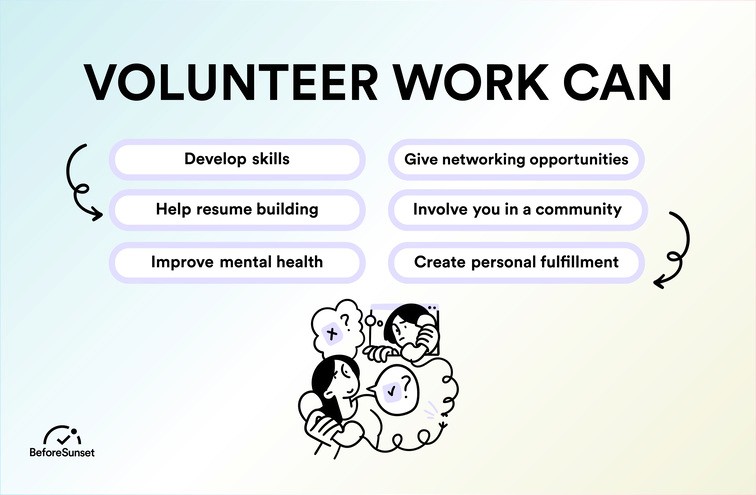
Customer satisfaction
VTO shows the company's support of cultural values. This leads to a boost in the company's reputation, image, and trust within society. Consumers appreciate businesses and associations that give back to their communities and make an attempt to improve the world.
Joining a volunteer program increases productivity
Volunteering can be a rewarding and fulfilling activity that can help reduce stress and improve overall well-being. Additionally, volunteering can help employees develop new skills and build relationships with colleagues, which can lead to increased job satisfaction and motivation.
Businesses can benefit from the new skills and talents of the employees
It is possible that businesses can benefit from the new skills and talents that employees develop while taking VTO. By taking time off to pursue personal interests or engage in activities outside of work, employees may be able to learn new skills and develop new interests that they can bring back to their work.
For example, an employee who takes VTO to learn a new programming language may be able to use those skills to improve the company's software systems.
Similarly, an employee who uses VTO to volunteer with a community organization may gain valuable leadership experience that they can apply in their work. By supporting employees in their personal and professional development, companies may be able to benefit from the new skills and talents that they acquire while on VTO.
Company benefit
First, it can improve employee morale and satisfaction by giving workers the flexibility to take time off when they need it. This can lead to increased productivity, loyalty and attract employees to the company.
Additionally, VTO can help reduce burnout and absenteeism, as employees are able to take breaks when they need them, rather than feeling like they have to work through exhaustion or illness. Employees participate in volunteer activities because it has a positive impact on the work life balance. When company's values align with employee benefit that is when most of the employees request VTO.
Finally, VTO can also be used as a recruiting and retention tool, as it is a valuable benefit that can attract and retain top talent.
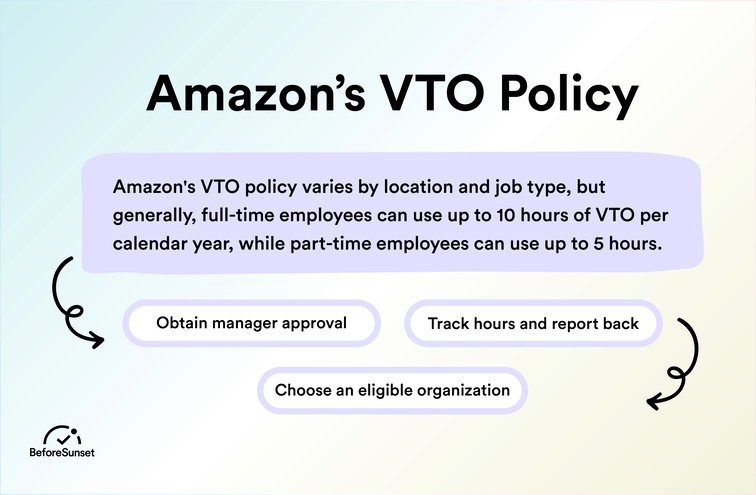
Get Your Time Off: Exploring Amazon's VTO Policy
Amazon, a well-known example of this practice, encourages its warehouse employees to take Voluntary Time Off as a way to boost productivity and reduce personnel costs. With this unpaid time off policy, Amazon creates a ground for its warehouse employees who want to leave early or skip a shift. It is accessible to full-time, flexible, part-time, and reduced-time workers. Warehouse workers thinks that this charity work and positive feelings ar the VTO benefits.
When there is little work to be done or when there are too many associates working or scheduled to work that day, VTO enables Amazon facilities to cut labor expenses.
Employees who finish their tasks earlier than the daily deadline may request voluntary time off and leave early. Before the holiday rush, the staff is frequently presented with this policy. This approach encourages workers to perform better and benefit from extra time for work or rest on sick days. Therefore more employees feel like this paid leave to do voluntary work results in less stress and overall productivity.
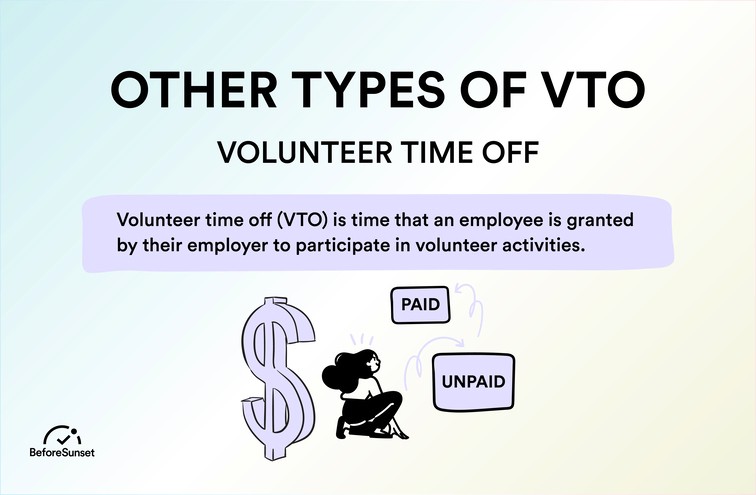
What is Volunteer Time Off?
Similar to paid time off, the Volunteer Time Off policy enables employees to take time off for volunteering throughout the workday and yet expect payment if you offer them this policy. This creates an opportunity for workers to support their community without having to lose a full day's pay. Volunteer time off VTO is commonly incorporated into your paid time off plan as well, making it just as simple to monitor as vacation and sick days.
While other firms completely leave it up to the employee to choose whatever volunteer program they wish to work with, some companies can offer volunteer opportunities for their employees, and cooperate with a specific nonprofit organization. Both strategies have advantages, so if a company can find a way to combine them, it might be a big success for its business.
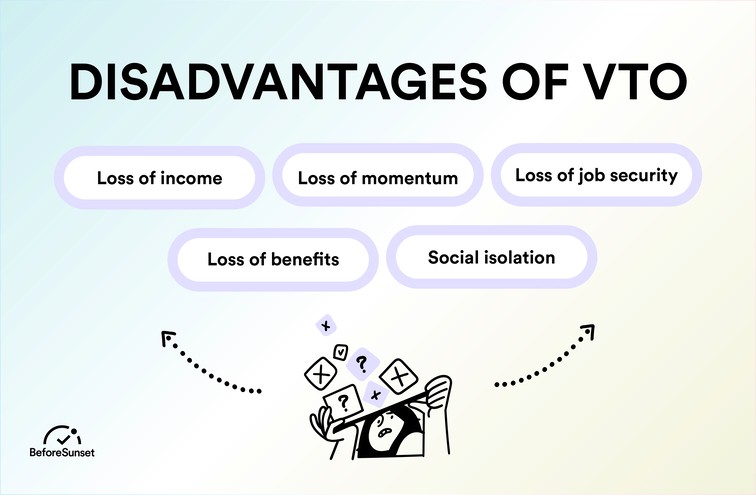
What Are the Drawbacks Of Voluntary Time Off?
There are several potential drawbacks to voluntary time off:
Loss of income: If you take voluntary time off, you will not be earning a salary or wages during that time. This can be a financial burden, especially if you are taking a significant amount of time off. So saving money and getting a full day's wages is out of the picture.
Loss of benefits: Some employers may not provide benefits (such as health insurance) to employees who are on voluntary time off.
Loss of job security: Depending on the circumstances, taking voluntary time off may affect your job security. Your employer may decide to fill your position while you are away, or may question your commitment to the company if you frequently request voluntary time off. Therefore you should ask a few questions your employer related to VTO such as leave categories, staffing requirements and other forms of VTO program-related questions.
Loss of momentum: Taking time off can interrupt your workflow and may make it harder to get back into the swing of things when you return. This can be especially true if you are in the middle of an important project or have a deadline coming up. It results in unproductive hours.
Social isolation: Taking time off can also lead to social isolation, as you may not be interacting with your colleagues or participating in company events. This can be especially challenging if you are an extroverted person who thrives on social interaction.
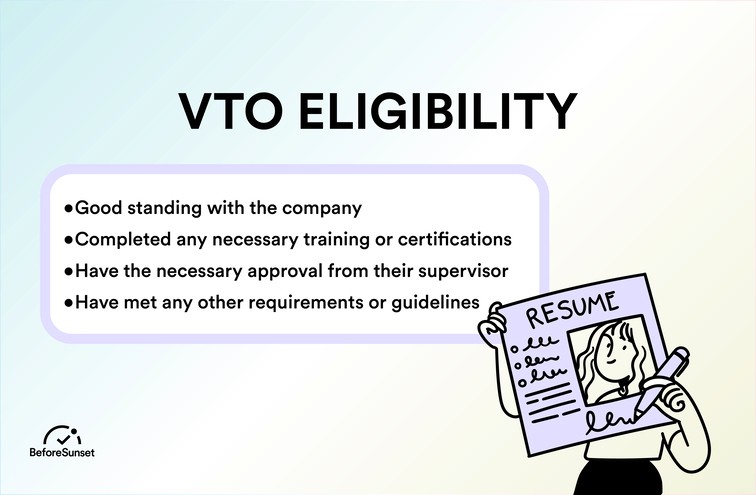
Eligibility requirements of VTO
The eligibility requirements for voluntary time off (VTO) will vary from company to company. Some companies may have specific policies in place that outline the conditions under which employees are allowed to take VTO, while others may be more flexible and allow employees to request time off on an as-needed basis.
In general, employees may be eligible to take VTO if they meet the following criteria:
They are in good standing with the company and have a positive work performance record.
They have completed any necessary training or certifications that may be required for the volunteer activity.
They have the necessary approval from their supervisor or HR representative.
They have met any other requirements or guidelines set forth by the company for taking VTO.
How many hours you worked is also important for this voluntary work.
In summary to be able to get VTO paid hours what matters is your employment status, having enough working hours, and choosing an approved charitable organization. Many organizations keep the requirements minimum for higher retention rate, stronger bonds and overall wellbeing. VTO has become an integral part of most organizations.
What is the vto request process?
The VTO request process should include steps to ensure the request is valid and approved by the right individuals. This process should include:
1. Eligibility: Establish who is eligible to participate. Is it only full-time employees? Are they eligible as soon as they join your company or what amount of time are they required to have worked before they are? Are employees on discipline eligible?
2. Amount of Time: Decide how many VTO hours are offered. Companies usually provide between 8 and 40 VTO hours annually.
3. Organization: Decide which organizations are allowable. Are employees allowed to volunteer only for non-profit organizations? What kind of organizations are they? Are they allowed to spend VTO volunteering for political organizations?
4. Request Process: Develop a request process for employees to follow when submitting VTO requests. This should include how far in advance requests should be submitted, how frequently employees can request VTO, and who is responsible for approving requests.
5. Auditing: Develop a system for auditing VTO requests to ensure they are being used appropriately.
6. Documentation: Document all of the above in the VTO policy.
7. Education: Provide education to employees on the policy and how to submit a VTO request.
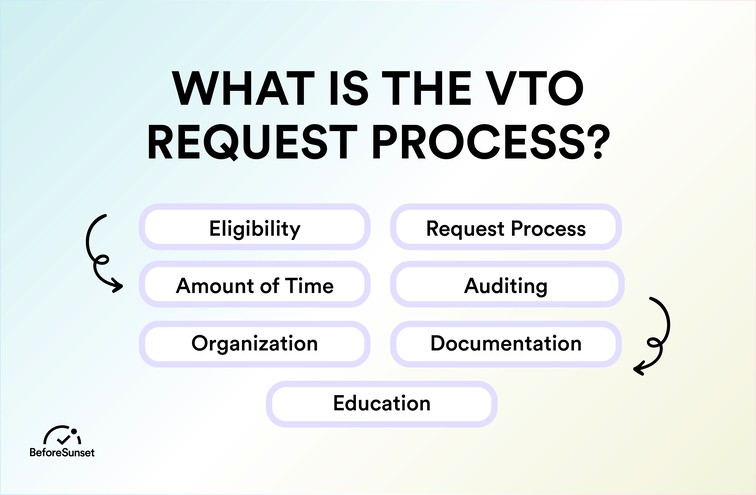
How will you track and validate their volunteerism?
To track and validate volunteerism, employers should first set up a program to include nonprofit organizations that align with their organizational goals and determine the eligibility requirements for the program.
Employees should then submit requests for VTO to their managers for approval via the usual channels. Employers should track and verify each employee's volunteer hours and ensure all information is up to date. Additionally, employers might want to consider investing in a corporate volunteering platform to help with tracking, administering, and managing volunteer initiatives.
This platform would also help track volunteer activity and efficiency. Finally, employers should communicate the VTO policy with their employees to make sure they understand who is eligible to participate, what the process for requesting time off looks like, and what the expectations are for volunteering.
What goes into creating a volunteer time off policy?
Creating a volunteer time off policy involves a few key steps.
First, decide which nonprofit organizations will be included on the approved list. Consider whether they align with your company’s mission and goals. You can also decide whether employees will be able to select their own charities or need to stick to the approved list.
Next, determine who will approve VTO requests and set a maximum number of hours each employee can take off for volunteering each year. You should also decide if part-time employees will be eligible to participate in the initiative or just full-time employees.
Finally, create a volunteer time off form for employees to complete and have approved by a manager before they can volunteer. You will also need to determine what type of verification you require from employees before they can take VTO.
Be aware of some of the drawbacks that can come with offering a volunteer time off policy, such as decreased productivity, employee pressure, and potential for abuse.
By following these steps and carefully crafting your VTO policy, you can help create a culture of giving back to the community and increase employee engagement, productivity, and mental health.
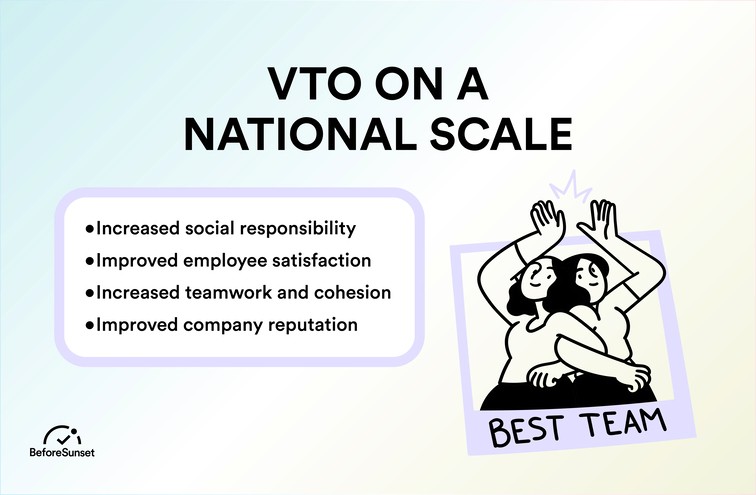
What would volunteering look like on a national scale if it was regularly offered at more companies?
If more companies offered regular volunteering opportunities to their employees, it is likely that the impact of volunteer work would be greatly increased. Some potential benefits of this include:
Increased social responsibility: Companies that encourage their employees to volunteer may be seen as more socially responsible and may be able to build positive relationships with their local communities.
Improved employee satisfaction: Many people find volunteering to be personally rewarding, and may feel more fulfilled and satisfied in their jobs if they have the opportunity to give back to their community through volunteering.
Increased teamwork and cohesion: Participating in volunteering activities together can help to build teamwork and foster a sense of community within a company.
Improved company reputation: Companies that support and encourage employee volunteering may be perceived more positively by both customers and potential employees.
It is worth noting, however, that volunteering should not be mandatory for employees. It is important for individuals to have the freedom to choose whether or not they want to participate in volunteering activities, and for companies to respect those choices.

What amount of time are they required to have worked before they are allowed paid volunteer time off?
There is no specific amount of time that an employee is required to have worked before they are allowed to take voluntary time off (VTO). The policies for VTO will vary from company to company and may depend on factors such as the employee's job title, length of service, and performance.
Some companies may have specific policies in place that outline the conditions under which employees are allowed to take VTO, while others may be more flexible and allow employees to request time off on an as-needed basis.
It is important for employees to review their company's policies and procedures for requesting time off, and to communicate with their supervisor or HR representative if they have any questions or concerns.
How frequently can they ask for time off per year?
Employees can receive up to 10 hours of VTO per calendar year. Most companies generally offer around 8-40 hours of VTO a year, with some companies, like Deloitte, offering unlimited VTO. The VTO is tracked separately from sick days or vacation days and is offered with a use-it-or-lose-it policy. The frequency and timing of VTO requests depend on the company's policy, but generally, the VTO is granted each fiscal year.

Amazon's VTO: What are the employee benefits?
VTO programs allow employees to take paid time off work in addition to their regular vacation and sick leave. This time off can be used for any purpose that the employee sees fit, such as vacation, personal days, or other activities.
Some companies may have specific guidelines or restrictions on how VTO can be used, but in general, it is meant to give employees the flexibility to take time off when they need it.
How much vto do you get at Amazon?
At Amazon, employees may take voluntary time off (VTO) when their employer requests it due to a work slowdown or when the workload is low and staffing is sufficient. Employees will not be paid for unworked hours, but they may leave early without penalty for vacation or sick leave.
The amount of VTO available varies from location to location and can fill up quickly, so employees are encouraged to take advantage of the opportunity when it arises. Additionally, VTO is kept separate from paid time off (PTO) and vacation days.
How often does Amazon give VTO?
The availability and frequency of VTO at Amazon can vary based on a variety of factors, including the workload and labor demand at any given moment, as well as the unique regulations and procedures of the Amazon facility in question.
In general, Amazon provides VTO on a discretionary basis, which means that it is up to the company's management to decide when and how much VTO is provided to employees. The frequency and availability of VTO might also differ depending on an employee's function, as well as their seniority or tenure with the organization.
While VTO is a voluntary program, excessive use of it may have an influence on an employee's performance and attendance records, as well as their general position within the organization. As a result, before seeking VTO, employees should carefully examine the implications, and they should always consult with their supervisor or HR representative to verify that they are following the company's rules and procedures.
Improve employees' health and wellbeing with VTO
VTO may be an excellent approach to enhance employees' health and wellbeing since it gives them the chance to participate in worthwhile activities outside of work that can enhance their feeling of purpose and general sense of well-being.
Employers can utilize VTO in the following ways to enhance the health and wellness of their staff members:
Urge staff members to donate their time to organizations that share their beliefs and passions. Employees may experience more contentment and engagement in both their professional and personal life as a result, which may enhance their mental health and general welfare.
Provide volunteer time as a flexible benefit so that staff members can spend their time off anyway they see appropriate. For instance, some workers could choose volunteering during the workday, whilst others would favor using their VTO time on the weekends or in the evenings.
Employees volunteer but they need to be given resources and assistance. This might be a directory of volunteer possibilities in the area, instruction on how to volunteer successfully, or access to a website that links staff members with volunteer opportunities.
Employees who utilize their VTO to improve their communities deserve recognition and celebration. This might encourage other workers to participate and foster a culture of giving back.
Ultimately, VTO may be a useful tool for businesses that wish to enhance workers' health and wellbeing by enticing them to partake in meaningful and gratifying activities outside of the workplace. Employers may help develop a more engaged, contented, and healthier workforce by giving workers the time, tools, and support they need to volunteer.
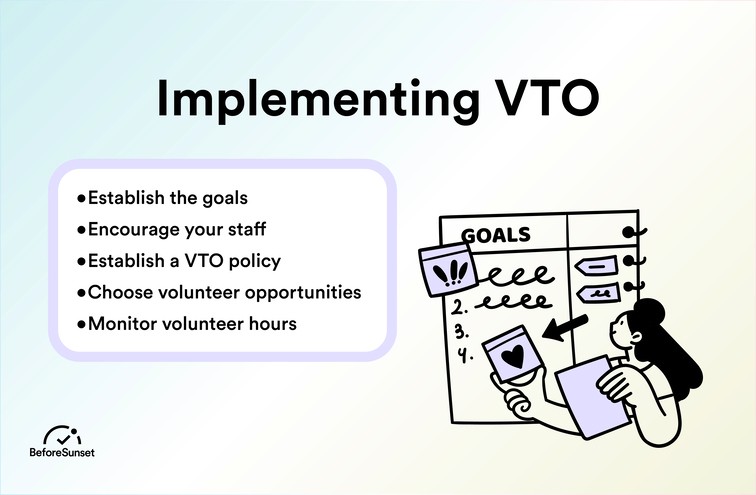
Align your VTO activities with your organizational goals
For optimal impact, volunteer time off (VTO) programs must be implemented in the workplace while being in line with organizational objectives. By doing this, you can develop a more intentional, narrowly focused, and efficient approach to your VTO program that not only benefits employees but also aids in the accomplishment of your corporate goals. The following stages can help you match your VTO operations with your organization's objectives:
Establish the goals that your business has for social responsibility, community involvement, and employee engagement. Think about the causes that are in line with your organization's goal and values as well as the social or environmental concerns that it is most enthusiastic about resolving.
Encourage your staff to offer causes and endeavors that fit with their interests, competencies, and abilities by including them in the process. You may win their cooperation and support for your VTO program by including them in the decision-making process. You may create events around these areas after identifying the causes and endeavors that appeal to your team the most.
Establish a VTO policy that specifies the objective, eligibility, quantity of vacation time, and approval procedure for VTO activities. To ensure that staff are aware of the requirements and restrictions of the program, make sure the policy is explicit and unambiguous.
Choose volunteer opportunities that support the aims and values of your organization. Think about presenting staff with chances to gain leadership experience or skills relevant to their positions.
By monitoring volunteer hours, participation rates, and employee feedback, you can gauge the effectiveness of your VTO program. Examine the advantages of VTO activities for your company's standing, employee satisfaction, and social effect.
You may develop a more focused and successful program that benefits workers, the community, and your company by integrating VTO activities with your corporate goals. It demonstrates your company's dedication to changing the world for the better, and it may help you draw in and keep people who share your principles and objectives.
Final Verdict On VTO
If it is done right, both Voluntary and Volunteer Time Off can help a company’s growth in the long run. Along with its benefits, it can be said that these policies can be hard to provide for small businesses or start-ups since those kinds of companies are short on budget and employees.
However, these companies can work on these policies for the future as the business grows. This way when the policy is offered to the company’s employees, it will be an outcome of detailed work that can benefit both company and the worker without any drawbacks.
In addition, once a company chooses to offer one of the VTO policies to its employees it will become a part of more than %60 companies including big and well-known companies like Google and Amazon that provides programs and policies like VTO.
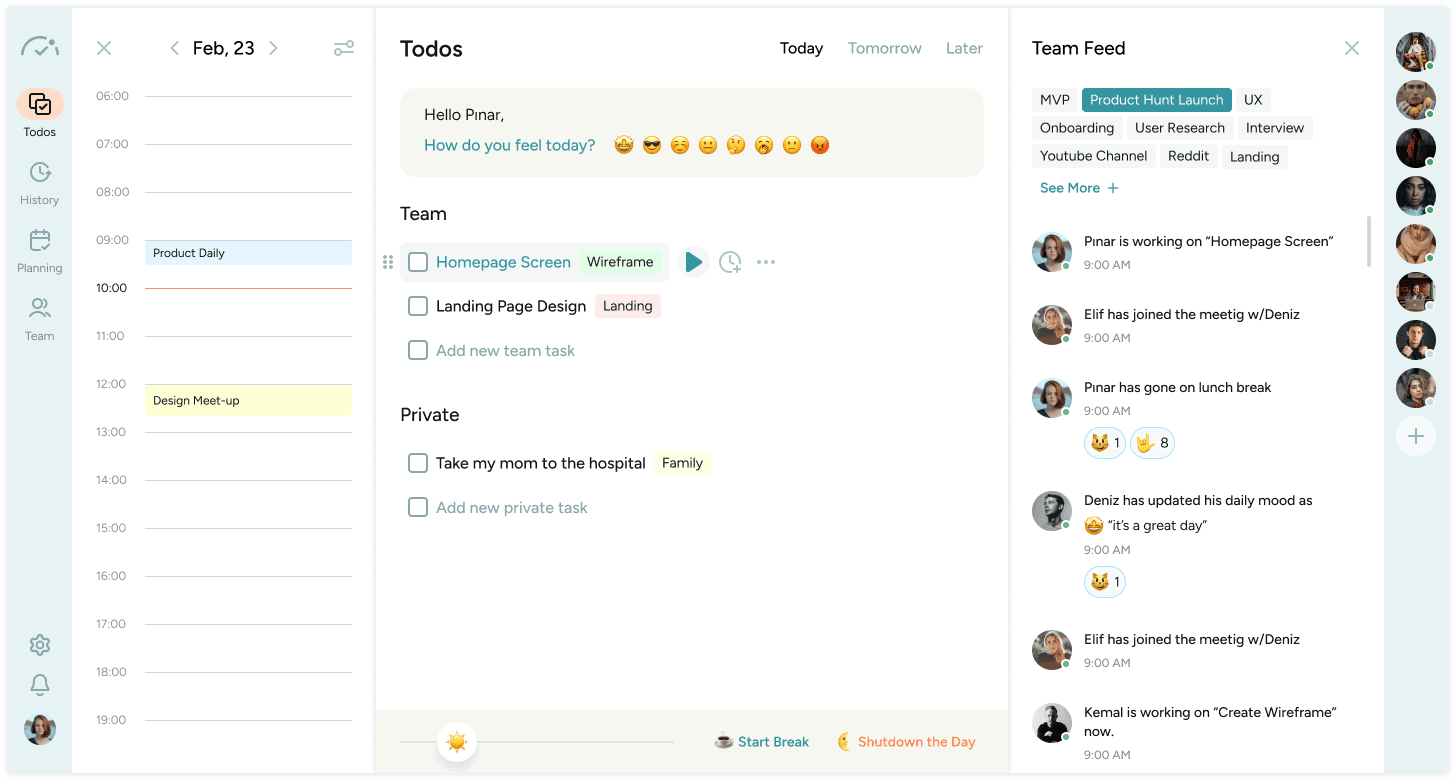
BeforeSunset is Always With You
Whether you are using your VTO or you are working BeforeSunset AI is always here to help.
BeforeSunset can help you in a number of ways. First and foremost, it can help you accurately track the amount of time you spend on various tasks and projects. This can be especially helpful if you are working on a project with a fixed deadline or budget, as it can help you stay on track and ensure that you are using your time efficiently.
By tracking your time, you can also help you identify areas where you may be losing time, such as through distractions or inefficient workflows, and can help you find ways to optimize your workflow and increase productivity.
Additionally, it can provide valuable insights into how you spend your time, which can help you make informed decisions about how to prioritize your tasks and allocate your time.
What are you waiting for? Use BeforeSunset AI today!

